Your potatoes have sprouted...a lot
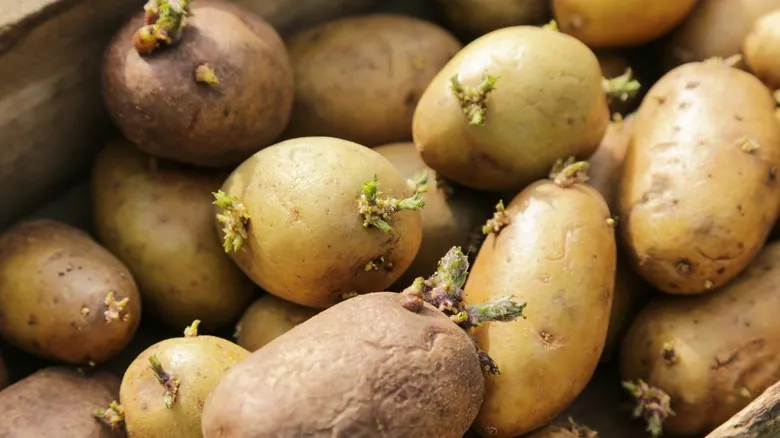
If you've stored a potato for a while, you might have observed that the eyes have begun to sprout. This is completely normal; it's part of how potatoes generate new plants. Potatoes belong to a category of plants known as tubers, and they propagate by producing new plants from their buds. Typically, this occurs in the spring and summer while the potatoes are still in the soil, but if the conditions in your pantry are suitable, the potatoes can become confused and start sprouting there instead.
For this to occur, potatoes require three essential elements: warmth, light, and humidity, which they can sometimes find in your home. However, a potato that has just begun to sprout isn't necessarily doomed. "All you need to do is cut off that area," explains Nicki Kathman, a local gardener and freelance landscaper from Minnesota. It's important to remove those sprouted parts, as potatoes contain two toxic glycoalkaloids. Glycoalkaloids are substances that can cause illness, and while the white flesh of the potato has minimal amounts, the sprouts contain significantly higher levels.
So, if a few sprouts are acceptable, why is this warning at the top of the list? There are a few reasons. First, if a potato has developed multiple sprouts, it may indicate other underlying issues. Second, these sprouts are one of the clearest signs that a potato is undergoing changes. If you notice several sprouts on your potato, take a moment to examine it and ensure there are no additional problems.
They feel soft and squishy
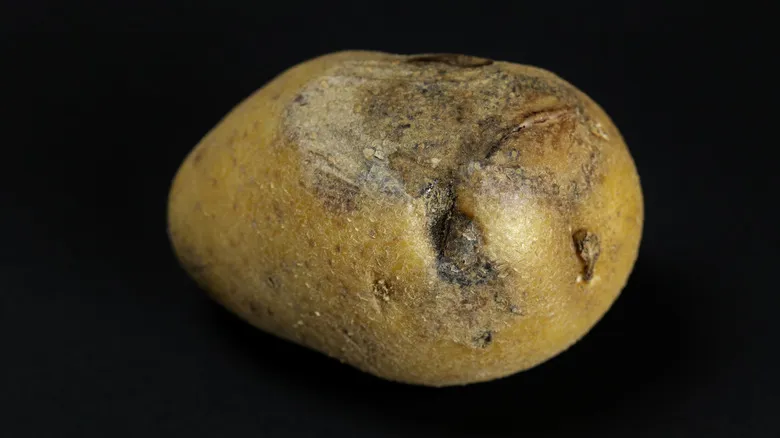
What are some subtle indicators that a potato has spoiled? According to Linda Colbjornsen, a local gardener who sells her produce at nearby farmers' markets under the name "Grandma's Garden," the first thing to watch for is a change in texture. "They become soft," she notes. Potatoes may begin to feel slightly soft due to moisture loss, but you should be particularly cautious of any squishiness or mushiness.
Nicki Kathman advises that potatoes should be discarded "if they have bruises that turn mushy." This is a sign that the potato is decaying, which can occur when it comes into contact with airborne microorganisms such as mold, yeast, and bacteria. Damage, such as cuts or bruises, can accelerate this process.
While a slightly soft potato is still safe to eat, it’s best to use it soon. However, if a potato has mushy areas (or is completely mushy), it should be thrown away. For gardeners, there is an alternative. "The great thing about potatoes," Kathman explains, "is that you can cut away the bad part, and as long as there's an eye left, you can plant it." If you have a green thumb and some space, consider growing your own!
The skin has become wrinkly

Potatoes consist of 80% water, and when kept in a dry environment, they begin to lose some of that moisture. This can result in slight softness, as previously mentioned, and may also cause the skin to wrinkle. A small degree of wrinkling is generally acceptable, but if your potatoes are completely shriveled and wrinkled, it's best to discard them.
The wrinkling and shriveling of potatoes occur because their insides have begun to decompose. As this process unfolds, the skin loses its tightness and starts to fold inwards. Potatoes that are decaying are unsafe to consume; they harbor microorganisms and glycoalkaloids that can lead to illness, regardless of how they are prepared. Moreover, they likely won't taste good, as decaying potatoes often have a bitter or sour flavor.
To slow down the decay and wrinkling of your potatoes, it's important to store them correctly. If you spot any soft or wrinkled potatoes in your supply, dispose of them immediately to avoid contamination.
Liquid is leaking everywhere
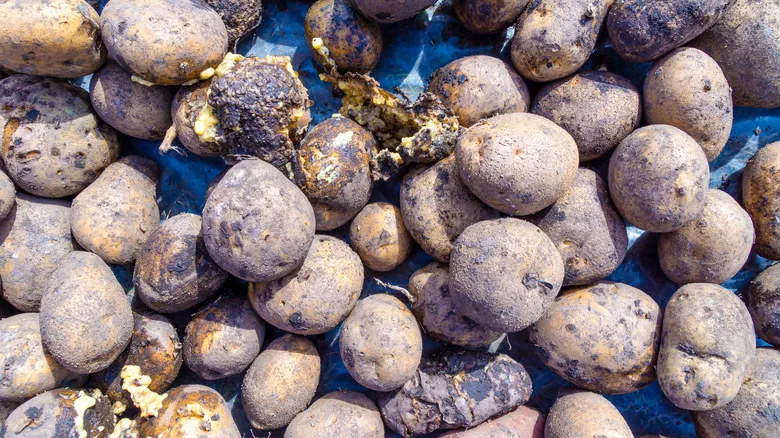
Have you ever grabbed a bag of potatoes from your pantry and noticed a wet spot left behind? If that’s the case, it indicates that your potatoes are starting to leak, signaling that they’ve reached the end of their shelf life. To clarify, this isn’t about the moisture that escapes when you cut into a potato; as mentioned earlier, potatoes are primarily composed of water, and slicing them breaks the cell walls, releasing some of that moisture.
However, if the potatoes are leaking while still intact, that’s a different issue altogether. There are a few reasons this can occur, but in either scenario, the potatoes are no longer safe to eat. The first reason is natural decay, which is often accompanied by other signs such as a soft texture, shriveled skin, and an unpleasant odor.
The second reason involves a fungus or pathogen. For instance, Pythium fungi can lead to leaking and a condition known as shell rot. When a potato becomes infected with this fungus, it begins to decompose the interior, turning it into liquid until only the outer shell remains. This infection can spread rapidly and is typically accompanied by a strong odor that shifts from vinegary to foul as the potato deteriorates. Unfortunately, it’s usually difficult to detect this fungal infection until after the potatoes have been harvested.
The smell turns terrible
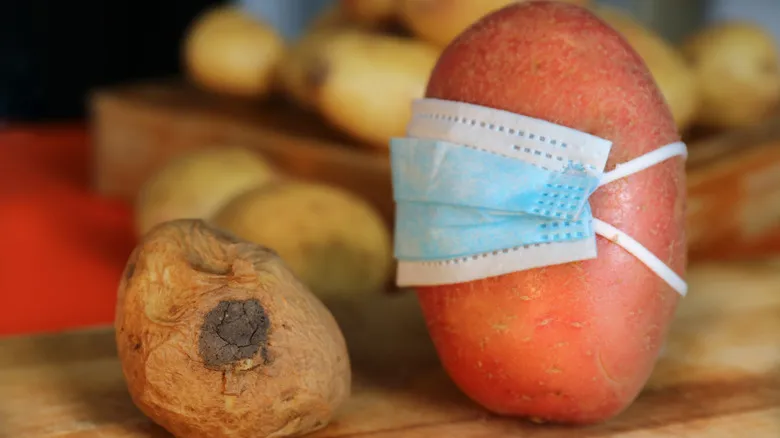
There are various kinds of potatoes, yet they all share a somewhat similar aroma. "I perceive it as starchy," explains Nicki Kathman, though it can also be characterized as earthy or neutral. However, if your potato emits a foul odor, resembling something sour or rotten, it is no longer safe to eat and should be discarded.
As potatoes begin to spoil, you may detect several distinct odors, and the nature of the smell can reveal the underlying issue. Like any organic matter, as potatoes decompose, they release gases. These gases are responsible for the foul, putrid scent associated with decaying potatoes. In significant amounts, these gases can be hazardous and are believed to have contributed to the tragic deaths of an entire family in Russia in 2013.
As previously mentioned, rot caused by the Pythium fungus typically starts with a vinegary scent and progresses to a smell reminiscent of rotting fish. Another fungus, Phytophthora erythroseptica, leads to a condition known as pink rot, also referred to as "blight." This particular fungus was responsible for the devastation of potato crops during the Irish famine. If your potato is infected, you will notice it upon cutting, but prior to that, you might detect an odor similar to formaldehyde or ammonia.
It's been overtaken by mold
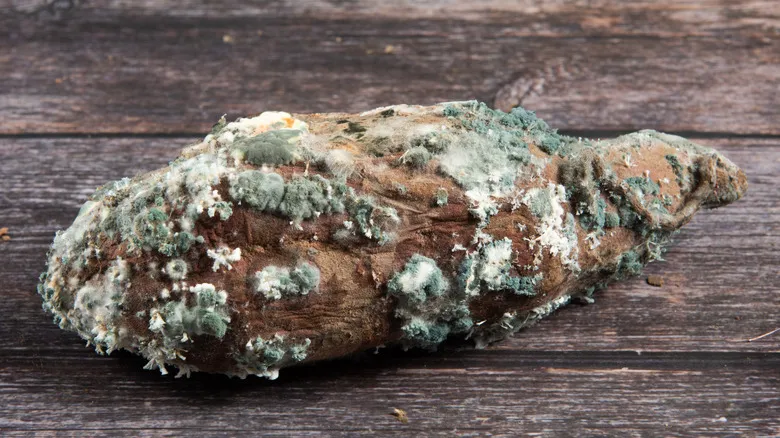
Generally speaking, if you discover mold on your food, it's advisable to discard it. However, there seems to be some debate regarding the necessity of this for firm fruits and vegetables. In the case of softer items, such as bread, mold spores can infiltrate deeply into the food, even if they aren't visible, which is why simply cutting off the mold from old bread isn't sufficient. Conversely, with harder foods like carrots and potatoes, some argue that mold struggles to penetrate as deeply.
This is particularly contentious when it comes to potatoes. Some people believe it's possible to cut away the mold and the surrounding area, while others argue that the spores may spread internally, warranting the disposal of the potato. The United States Department of Agriculture (USDA) generally supports the idea that when a food exhibits significant mold growth, its "root" threads have likely penetrated deeply. However, it does not provide specific guidance regarding potatoes.
Overall, it's wise to take a cautious approach. Certain molds can be harmful, and some individuals may experience allergic reactions. If your potato has a small amount of mold, it might be acceptable to salvage it, but if it resembles a dandelion gone to seed or a "Star Trek"-like tribble, it's definitely time to throw it away.
The skin has strange spots
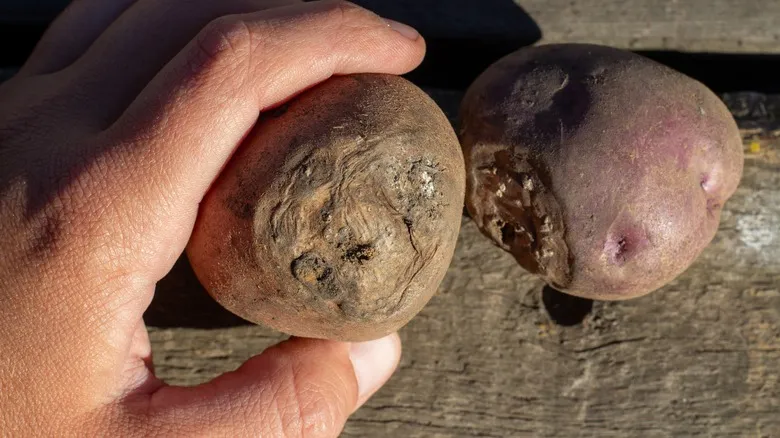
It's uncommon to find a potato that is perfectly uniform all around. However, there are certain external signs that can indicate a potato is unhealthy and unsafe to consume.
We've previously noted that potatoes affected by Pythium become soft, leak, and emit an unpleasant odor. These issues often begin with spots on the surface, as the fungi typically enter through cuts or abrasions on the potato's skin. These spots are not bruises; they are lesions that usually appear gray or brown. In contrast, potatoes with pink rot will show darkening skin and may develop black lesions, although these signs are less noticeable than those associated with Pythium.
Dry rot, caused by certain types of Fusarium fungi, can often be recognized by a crumbly brown rot spot on the exterior, which may sometimes be covered with a white fungus. Additionally, you should steer clear of potatoes affected by Alternaria fungi, which typically present with shallow, dry lesions that are gray or black. However, if you see a silvery "scab" on the skin of your potato, it is still safe to eat. These scabs are caused by fungi, and while they may appear unappealing, they can be removed by peeling the potato first.
The insides don't look right

Various infections can make potatoes appear healthy on the outside, but cutting them open reveals underlying issues. For instance, a potato affected by soft rot may seem fine externally, but once sliced, it reveals a hollow area typically lined with gray and surrounded by a brown patch. Another form of wet rot also presents brown spots, but it additionally features black specks and a grainy, mushy texture. Potatoes infected with Phytophthora often look perfectly normal on the outside, yet inside, they exhibit a dry, reddish-brown rot that spreads from the skin inward.
As previously mentioned, potatoes infected with Pythium tend to be soft and leak. Inside, you’ll find a similar squishy, rotten brownish-black area along the edges. Potatoes affected by pink rot, or blight, are somewhat distinctive in that they don’t appear drastically different when cut, although a slightly darker spot will be noticeable inside. After 10-20 minutes, this spot develops a deep pink hue, which eventually transitions to brown and then black over time.
They've gone green

There’s an old saying that green potatoes can make you ill or even be fatal. Like many such sayings, there’s a kernel of truth to it—actually, quite a bit of truth. Recall the two glycoalkaloids we discussed earlier? They are known as solanine and chaconine, and they can be found in nightshade plants such as potatoes, tomatoes, eggplants, and, of course, the toxic belladonna. These compounds can lead to severe gastrointestinal issues, including cramping, vomiting, and diarrhea, and they cannot be eliminated through cooking.
Typically, potatoes, tomatoes, and eggplants contain only small amounts of solanine and chaconine. In fact, you would need to consume around 12 eggplants in one sitting to experience symptoms of solanine poisoning. However, green potatoes have a higher concentration of this toxin, although interestingly, the color itself isn’t the cause.
When potatoes are exposed to light, the levels of glycoalkaloids rise, along with chlorophyll, which is what gives the potatoes their green hue. Therefore, while the green color doesn’t directly cause poisoning, an increase in chlorophyll usually indicates a corresponding rise in glycoalkaloids. Consequently, it’s not enough to simply cut away the green parts; it’s safer to discard the entire potato.
How to keep your potatoes fresh longer
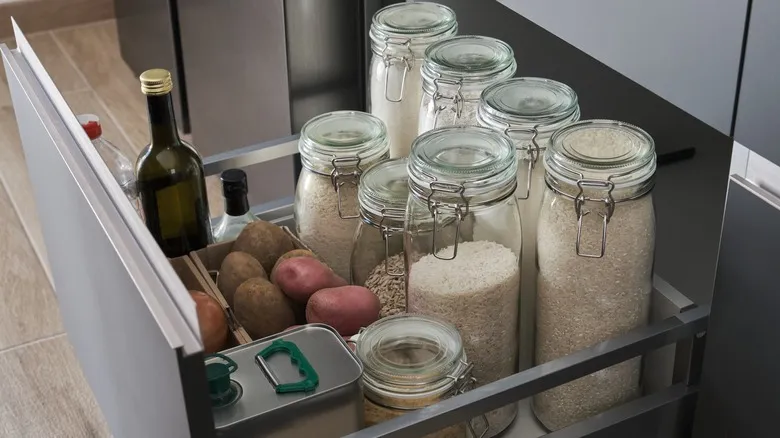
As you might expect, potatoes thrive in a cool, dry, and dark environment, allowing them to last for an extended period. As Nicki Kathaman points out, "In the past, people would store potatoes, carrots, and similar items in root cellars to keep them fresh throughout the winter."
To store your potatoes effectively, keep them dry and avoid washing them until you're ready to use them. Ensure the storage area is well-ventilated. Keeping them in darkness helps inhibit the formation of solanine and chaconine, as well as prevents sprouting. If you plan to boil or bake the potatoes, aim for a storage temperature of around 38°F. However, if you intend to fry them, they can be stored at temperatures up to 45°F. Potatoes prefer breathable containers and should not be stored alongside produce like onions, which release gases that can hasten sprouting and decay. Additionally, regularly inspect your potatoes and discard any that show wet spots, mold, or signs of rot.
Recommended
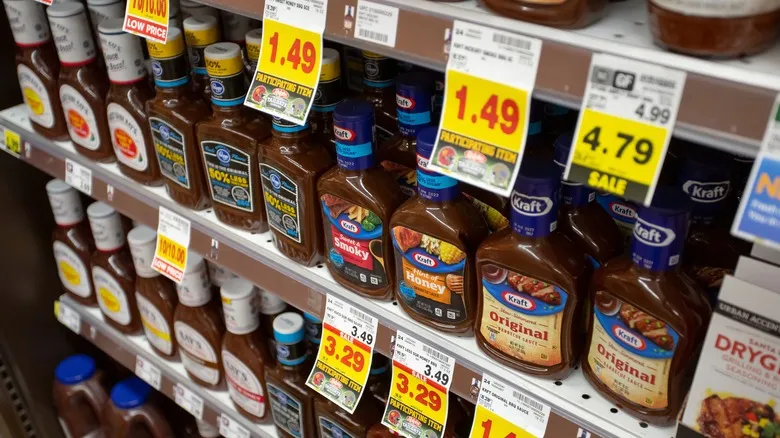
When Does Store-Bought BBQ Sauce Really Go Bad?
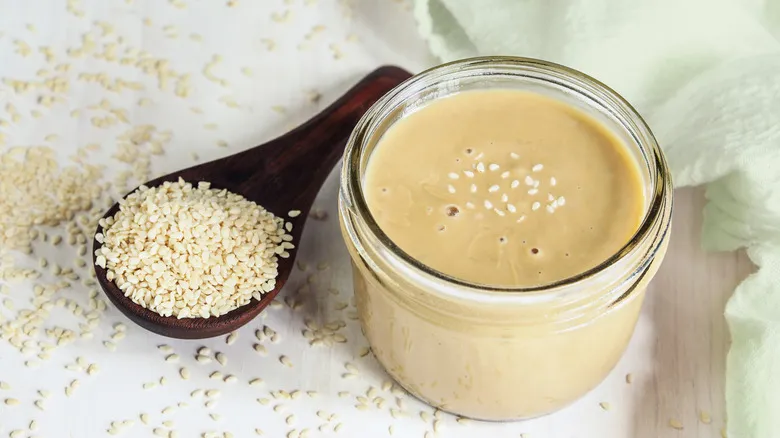
How Long An Open Jar Of Tahini Will Stay Good
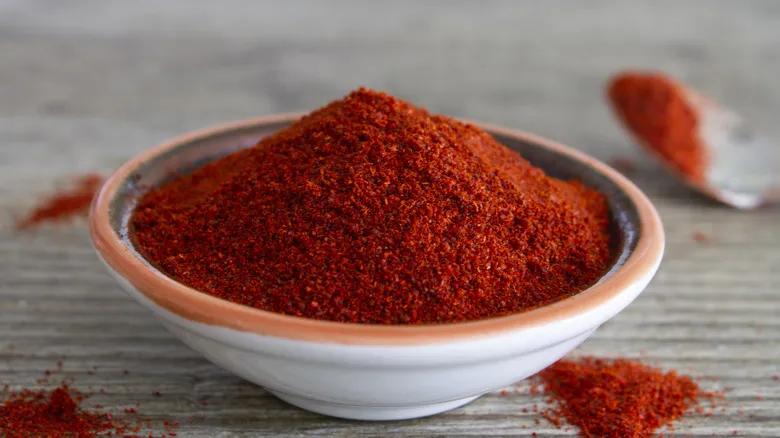
How Often You Should Replace Paprika For The Strongest Flavors
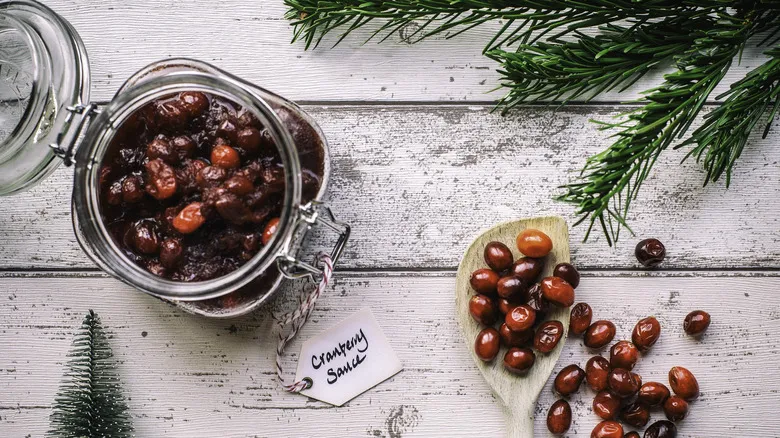
12 Things You Didn't Know About Cranberry Sauce
Next up

